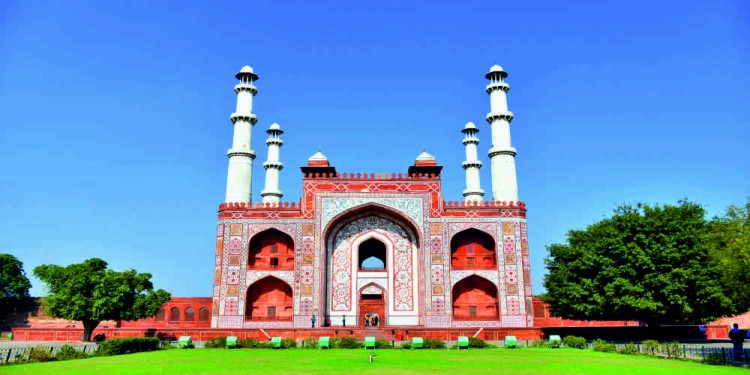
4 hour
12 month
Agra
Up
The magnificent Akbar's Mausoleum, which can be seen at Sikandra, Agra, honours the memory of one of India's greatest kings, Akbar the Great. Emperor Akbar's secular ideas and respect for all civilizations are reflected in this beautiful tomb, an architectural masterpiece that displays a rare fusion of Hindu and Islamic influences. The grandeur and artistic genius of the Mughal era are fascinatingly revealed by seeing this historical masterpiece.
|
When was built |
Akbar's Mausoleum in Sikandra |
|
Who is founder |
The construction of the mausoleum started in 1605 and was completed in 1613. |
The main components of Akbar's Mausoleum in Sikandra should exhibit the architectural designs and cultural influences that were popular throughout the Mughal era. The mausoleum ought should represent the pluralism and secular principles that Emperor Akbar cherished, serving as a testament to peace and harmony.
The overall goal of the construction of Akbar's Mausoleum in Sikandra is to capture the splendour and grandeur of the Mughal era while also evoking the values of religious tolerance and cultural fusion that Emperor Akbar promoted. The structure ought to serve as a symbol of India's rich historical and cultural heritage, welcoming people from all walks of life to see the legacy of one of its greatest emperors.
|
S.No |
Visiting Places |
Timing |
Open/Closed Day |
Distance |
|
1 |
09:00 Am To 05:00 Pm |
closed on Fridays for general viewing |
31 min (13.6 km) via NH 19 |
|
|
2 |
8 am–6 pm |
All Day open |
4 min (1.5 km) via NH 19 and PP Nagar Rd |
|
|
3 |
6 am–5 pm |
All Day open |
25 min (13.1 km) via NH 19 |
|
|
4 |
24 Hours |
open every day |
48 min (36.6 km) via Fatehpur Sikri Rd |
The impressive Akbar's Mausoleum in Sikandra serves as a reminder of the Mughal era's grandeur and beauty. Emperor Akbar, a tyrant renowned for his progressive goals and tolerance of all cultures, is represented in this architectural marvel as his vision. The mausoleum's distinctive fusion of Hindu, Islamic, and Persian influences is a prime example of the peaceful cohabitation of various civilizations that was a hallmark of Akbar's rule.
Chardham Yatra Registration Figure Reached 10.66 Lakh, Maximum 3.52 Lakh Registrations For Kedarnath Dham
Mahakaleshwar Temple: Timings, Bhasm Aarti, History
Uttarakhand Trip Budget: Hotels, Adventure Activities, Days & Destinations
Jagannath Temple Puri: History, Location, Darshan Timings, How to Reach
Kamakhya Temple: History, Location, Darshan Timings, How to Reach
दिल्ली का चांदनी चौक क्यों है इतना प्रसिद्ध
मेघालय घूमना चाहते है कैसे करें यात्रा प्लान
चाहते है सिक्किम टूर प्लान करना यह है बेहतरीन तरीका
मंदिर के दान से चलती है राज्य की अर्थव्यवस्था (तिरुपति बालाजी मंदिर)
Triyuginarayan Temple: Location, History, Plan Your Wedding, How to Reach, Route Distance
Call Our Customer Care Executive. We Are Available 24x7 Just Dial.
+91 9810833751 Send Enquiry© All Copyright 2013 - 2024 Reserved japjitravel.com